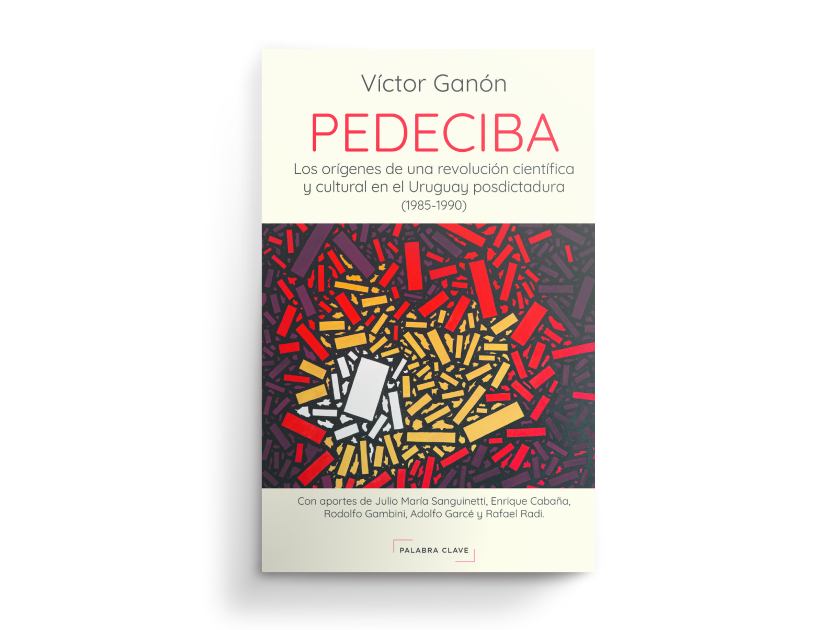Not surprisingly, the de-facto regime that oppresses, imprisons, tortures, harasss, and hides people just for thinking otherwise is cruel to any activity that generates knowledge. Thus, among other sad shortcomings, at the end of the dictatorship there was no way or place for training in scientific research in Uruguay.
Against this background, the Basic Science Development Program (Pedeciba) was created, an initiative that aims to professionalize the research profession by making master’s and doctoral courses possible (in science, a doctorate allows you to coordinate and lead research teams). But if you pay attention to the previous sentence, there is an injustice there: the passive voice – “created” – hides the fact that human creativity does not happen automatically due to random pairings of coincidences. the book I asked. The origins of the scientific and cultural revolution in post-dictatorship Uruguay (1985-1990)By Victor Ganon, it is essential to understand how and who created this successful programme, which began operating in October 1986 and to this day is the mainstay of researcher training.
Victor Gannon knows what he’s talking about twice. Currently, as the author of this book, he has revised and synthesized many documents at the time, mostly minutes from the assemblies that made up Pedeciba beforehand, and after everything was on track, the meetings of the board of directors. In the past, as the hero of all those events.
Trained in computer science abroad, Ganón has participated in talks in the field of computer science – which, along with biology, mathematics, physics and chemistry, will be the top five promoted by Pedeciba – already in the “first symposium to evaluate proposals for programmer “Development of Basic Sciences” , between December 10 and 20, 1984 at the request of researchers from the five regions, who formed the Honorary Advisory Group and with the support of the United Nations Development Program and UNESCO. For the second symposium, already held in Democracy, in May 1985, Gannon, who was advising the President, participated Julio Maria Sanguinetti, as delegate of the Ministry of Education and Culture at the request of Minister Adela Rita.Then he will be part of the steering committees until 1990.
A story worth telling
The book quickly traces the steps taken by the various champions to make the discovered weaknesses in the training of researchers and scientific production in Uruguay give way to the necessary Pedeciba.
It is surprising and fascinating to see how the idea for this program arose from conversations between the researchers themselves, specifically those at the Clemente Estable Institute for Biological Research (IIBCE). At the end of 1983, biologists Omar Trujillo, Omar Macadare and Horacio Cardoso had endless conversations about how to promote postgraduate courses after the latter heard “rumours” from UNESCO’s Regional Office for Science and Technology for Latin America and the Caribbean (Roslak), which was based in Montevideo. , there was concern about the decline in the number of PhDs in Uruguay and there was a willingness to support this change.
Scientists were not alone. The will and conviction of Argentine Gustavo Malik at the head of Roslak and the Spanish representative of the United Nations in Uruguay, Pedro Mercader, pushed the idea forward and helped it advance. When the outlines of what would be the Pedeciba, drawn up at that symposium in December 1984, reached the ears of the elected government of Sanguinetti, it was understood that it was something to be supported. In his book, Gannon emphasizes the character of Minister Adela Rita for this to happen. He also insists on a leadership role throughout the operation of Jorge Provito, Vice-Chancellor of the University of the Republic (AUDilar), and Samuel Lichtenstein, Rector of the University. As Ganón says, it was the policy of the state created from the bottom up (Progressive) not the opposite.
In addition to Ganón’s first-person account sprinkled with quotations from the lecturers and documents that make us feel like witnesses to how Pedeciba was formed and how his achievements were valued at the time, the book contains pages from the meditations of Rafael Radhi, who was one of the first to take a Pedeciba Biology course, Adolfo Garcé, Eduardo Cabaña, who was Deputy Academic Director and then Program Director, and Rodolfo Gambini, an inescapable scholarly figure in our country who also directed Pedeciba. In this way, a story is told that is not written anywhere and that Gannon fears will be lost when its heroes leave this world.
But Gannon’s book is not just history. It is an example of how big thinking can go beyond the short-term perspective of electoral cycles. It’s evidence that there were moments in our not-too-distant past when supporting science was more than an empty slogan of resources and action. It is also hopeful: in the current scenario in which the scientific community is battered and multiple spaces for reflection on science have been created, from the National Academy of Sciences of Uruguay to the Association of Researchers and Researchers of Uruguay (Investiga uy), passes by the indispensable Udelar or the Uruguayan League For undergraduate and postgraduate students (AUPP), the book shows us how much we could achieve if those with the upper hand paid more attention to the proposals of their scientific community.

“Social media evangelist. Student. Reader. Troublemaker. Typical introvert.”

:quality(85)/cloudfront-us-east-1.images.arcpublishing.com/infobae/TEQF6EONZRFGLLLDIDD4L2O4EE.jpg)

:quality(75)/cloudfront-us-east-1.images.arcpublishing.com/elcomercio/XU32LRAEZFDDPNVHLFU3CKVBYY.jpg)



More Stories
Venezuela ranks fourth in female leadership in science and technology in Latin America
In Portuguesa and Sucre they explore the wonderful world of science
The university court overturns the expulsion of two teachers and a chemical sciences student